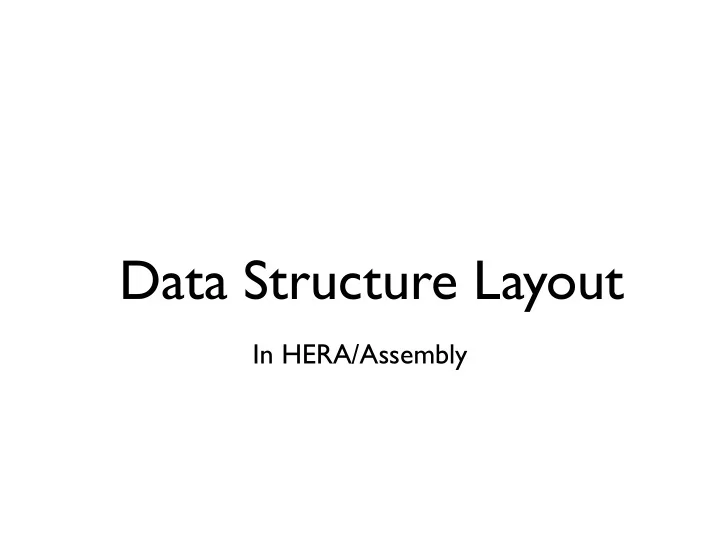

R1 = 0 // Assume t is in R1 R2 = after1 // Assume return addr in R2 // Return result in R3 R3 = 0 LABEL(sumTree) SUB(R0,R0,R1) R4 = 13 BNZ(not_null) SET(R3, 0) BR(R2) LABEL(not_null) LOAD(R4, 0, R1) 42 LOAD(R1, 1, R1) a1 SET(R2, after1) BR(sumTree) LABEL(after1) ADD(R4,R3,R4) LOAD(R1, 2, R1) SET(R2, after2) BR(sumTree) LABEL(after2) 13 63 a3 ADD(R4,R3,R4) a2 MOVE(R3,R4) BR(R2)
R1 = 0 // Assume t is in R1 R2 = after1 // Assume return addr in R2 // Return result in R3 R3 = 0 LABEL(sumTree) SUB(R0,R0,R1) R4 = 13 BNZ(not_null) SET(R3, 0) BR(R2) LABEL(not_null) LOAD(R4, 0, R1) 42 LOAD(R1, 1, R1) a1 SET(R2, after1) BR(sumTree) LABEL(after1) ADD(R4,R3,R4) LOAD(R1, 2, R1) SET(R2, after2) BR(sumTree) LABEL(after2) 13 63 a3 ADD(R4,R3,R4) a2 MOVE(R3,R4) BR(R2)
R1 = 0 // Assume t is in R1 R2 = after1 // Assume return addr in R2 // Return result in R3 R3 = 0 LABEL(sumTree) SUB(R0,R0,R1) R4 = 13 BNZ(not_null) SET(R3, 0) BR(R2) LABEL(not_null) LOAD(R4, 0, R1) Segmentation fault 42 LOAD(R1, 1, R1) a1 SET(R2, after1) BR(sumTree) LABEL(after1) ADD(R4,R3,R4) LOAD(R1, 2, R1) SET(R2, after2) BR(sumTree) LABEL(after2) 13 63 a3 ADD(R4,R3,R4) a2 MOVE(R3,R4) BR(R2)
So… What went wrong?
I assumed my locals were my own
Which registers does sumTree overwrite?
Which registers does sumTree overwrite? R1 R2 R3 R4
So, how do we fix this?
Use the stack
I need to save my registers when I call functions
Note: in HERA, unlike some other processors, the stack grows up Stack (This is different than my i7) … “top” of the stack …
We can use a pointer to hold a reference to the top of the stack This is typically called the stack pointer The stack pointer points at the next available word on the stack
Stack SP , aka R 15 … …
The stack pointer by convention always points at the top of the stack Stack You can change it, nothing stops you It’s just a regular register SP , aka R 15 … …
I want to make myself some space Stack for some local variables SP , aka R 15 …
Stack So how do we do that? SP , aka R 15 …
We increment the stack pointer
ADD(SP, 4, SP) SP/R 15 Stack Stack frame
Stack Frame: portion of stack that holds local variables for single invocation of some function
By convention we use a frame pointer to refer to the base of the frame
SP/R 15 … Stack Local variable 4 Local variable 3 Local variable 2 FP/R 14 Local variable 1
Frame pointer is handy because I can now use LOAD(R d , o, FP) To load from local variable o STORE(R b , o, FP) To store into local variable o
This generalizes to caller-save convention To call a function…
This generalizes to caller-save convention To call a function… Caller passes arguments on the stack
This generalizes to caller-save convention To call a function… Caller passes arguments on the stack Saves registers before call (Also save old SP , FP , and ret. addr)
This generalizes to caller-save convention To call a function… Caller passes arguments on the stack Saves registers before call (Also save old SP , FP , and ret. addr) Result returned on the stack
The Big Rule
If I’m going to change a register, I had better save it first
I have two possibilities: Either the caller saves the registers Args passed in registers (“Caller save”) Or the callee saves the registers Args passed on stack (“Callee save”)
Caller save
Here’s what I do
Let’s say I’m currently using R4 and R5 And foo expects R4/R5 as arguments
R4 23 R5 89
R4 23 R5 89 And my stack looks like this…
R4 23 R5 89 Stack And my stack looks like this… SP , aka R 15 …
R4 23 R5 89 First : save stack pointer in frame pointer Stack SP , aka R 15 …
FP a R4 23 R5 89 Stack MOVE(FP,SP) SP , aka R 15 a …
FP a R4 23 R5 89 Stack Next: increment SP SP , aka R 15 a …
FP a R4 23 R5 89 Stack INC(SP,2) SP , aka R 15 a …
FP a R4 23 R5 89 Stack INC(SP,2) SP , aka R 15 a …
FP a R4 23 R5 89 Stack INC(SP,2) SP , aka R 15 This is my new space a
Next: save R4 and R5 there
FP a R4 23 R5 89 Stack STORE(R4,0,FP) a
Recommend
More recommend